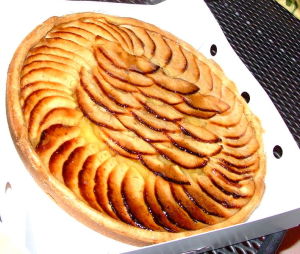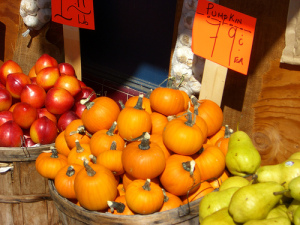When you travel, plan ahead!
If traveling by vehicle, know where you are going and how to get there and back. Obtain a map or download the latest available GPS data.Check for construction detours; for longer trips, get a weather forecast.
If traveling out-of-state, most states and/or state law enforcement agencies provide road-and-highway information either on-line or at a 1-800 number; check to see what conditions they report before leaving. Visit the Federal Highway Administration’s related webpage…
“National Traffic and Road Closure Information”
http://www.fhwa.dot.gov/trafficinfo/index.htm
Inform a family member where you will be and when to expect you back; give them your route if they don’t know it.
If you have access to a cellular telephone, carry or take it (but don’t use it while driving; this is now unlawful in many states).
If possible, know the emergency cell codes for the area you’re in.
Click here for a state-by-state listing of
highway-related cellphone codes.
When driving, keep doors locked and windows rolled up at all times. Maintain at least half a tank of fuel, and keep vehicle in good repair.
If planning a “road trip” over the holidays, have your vehicle serviced and checked out sufficiently far ahead to allow for repairs if needed. Don’t forget to have the mechanic check your spare tire and all fluid levels along with the other preventive maintenance procedures.
Consider keeping spare fuses and a “breakdown kit” in your vehicle at all times. Breakdown kits may be purchased from a variety of sources, or you can assemble your own at any auto parts or hardware store using a commercial version as a guideline.
Minimally, a “breakdown kit” should include:
|
|
a thermal blanket/bag and a gallon of water | ||
|
|
a “HELP” sign/flag and flares/reflectors | ||
|
|
a flashlight (check batteries semi-annually) | ||
|
|
duct tape | ||
In addition to your basic “breakdown kit” you should also have a basic first aid kit in your vehicle at all times.
The single-most essential safety tip:
Devote your full time and attention to driving!
Resist distraction. If you feel yourself getting tired, pull over and take a break (at a safe location where there are other people and light).
Develop the habit of scanning for situational awareness. Use your mirrors frequently to check behind and to your sides. Look ahead, as far down the road as possible, to anticipate slow-downs, stops, snarls, crashes, emergencies, or other events which will affect traffic flow. Avoid the “tunnel vision” which often occurs during monotonous highway driving as you focus only immediately ahead or where your headlights reach.
If you experience a breakdown, pull as far onto the shoulder as possible and turn your emergency flashers on. If you have a cellular phone, summon assistance from a reputable source or call for law enforcement response. Otherwise, raise your hood or tie a streamer to your antenna, and await assistance inside your locked vehicle.
If a stranger stops, speak to them through a partially rolled-down window, and ask them to go to a phone and call police or a tow service; do not exit your vehicle until a law enforcement officer or tow operator are on scene. On longer trips, be sure you have water, food, and blankets in the vehicle.
Should you observe anyone pulled off the roadway and apparently stranded or in need of assistance, extend them the courtesy of reporting your observation to the police at your earliest opportunity.
NEVER pick up hitchhikers (your parents were right!)
If involved in a property-damage collision in an unfamiliar or potentially unsafe location, do not open or exit your vehicle. If you have a cellular telephone, summon law enforcement. If not, acknowledge the accident by hand signal, and motion the other driver to proceed with you to a safe location (where there are other people and light) to exchange information. If unable to proceed, honk the horn to attract attention and ask a passer-by to summon police.
Criminals sometimes deliberately cause minor car crashes in order to rob the occupants or steal the vehicle (so-called “bump-and-rob” or carjacking). If you are involved in a collision which seems suspicious, remain in your vehicle. Get as far off the roadway as possible, and turn on your emergency flashers. Do NOT get out to inspect for damage or to exchange information.
Summon a law enforcement officer or signal the other driver to follow you to a location where you can safely do so. If necessary, sound the horn to attract attention and await help while secure in your vehicle.
If the driver of another vehicle tries to force you off the road, do not stop. Slow to a safe speed, and proceed to a safe location. Try to obtain the license plate number and a description of the other vehicle and its driver and any occupants. Report the occurrence to the police at your earliest opportunity.
Keep your car in gear while stopped at traffic signals or signs. If approached in a threatening manner, honk the horn to attract attention and drive away (as you can do so safely).
Consider car-pooling or ride sharing only IF you have a dependable means of assuring that the other participants are legitimate and safe. Some jurisdictions maintain a central coordinating office for such services; check your telephone directory or on-line. Ride sharing for long trips is NOT recommended unless you are personally acquainted with the other party and fully trust them and have confidence in their driving ability and common sense. Remember; you life is literally in their hands while they’re behind the wheel.
When returning to your vehicle, carry your keys in your hand and be ready to unlock the door and enter as quickly as possible. As you approach your vehicle, scan the area, glance underneath the vehicle, and take a quick look inside before entering.
While out and about, present an alert appearance.
Be aware of your surroundings; scan the area from time to time. Avoid concentrating so hard on shopping that you fail to keep track of your surroundings, others near you, or your personal property.
- Wear conservative, comfortable clothing.
- Grip carried items firmly and avoid leaving them unattended.
- Carry minimal cash and valuables, wear minimal jewelry.







